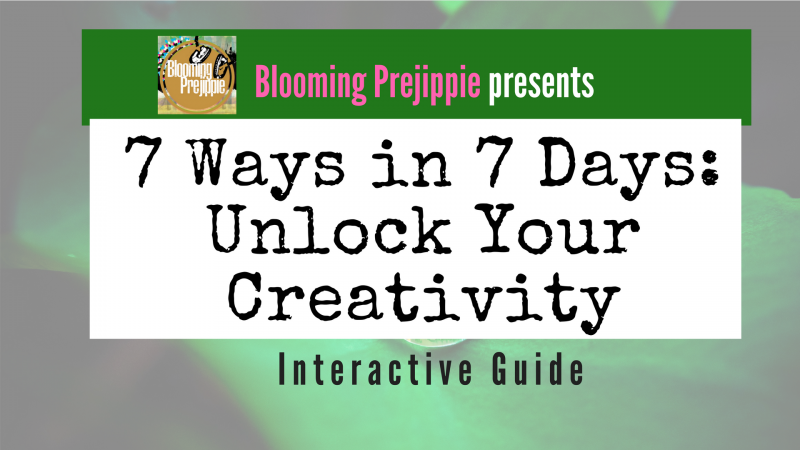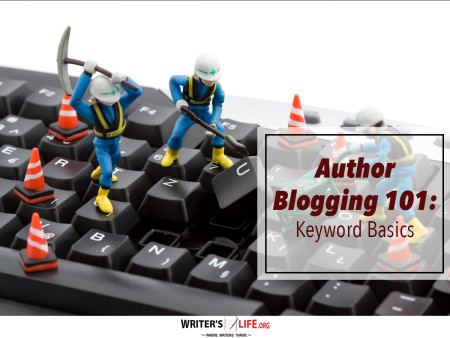- How To Tackle Jealousy In Creative Writing
- Common Submission Mistakes
- How To Stop Your Blog Becoming Boring
- The One Thing Every Successful Writer Has In Common
- How To Make Yourself Aware Of Publishing Scams
- Why Almost ALL Writers Make These Grammar Mistakes At Some Point
- 5 Tips For Authors On How To Deal With Rejection
- Top Mistakes to Avoid When Writing a Novel
- How to Avoid Common New Writer Mistakes
- 10 Mistakes New Fiction Writers Make
7 Ways in 7 Days: Unlock Your Creativity Interactive Guide

Blooming Prejippie Zine shows you how to overcome writer's block one day at a time.
We spent last summer trying to find out how to be constantly more creative. What we found out was that creativity is not so much mysticism, but strategy. Creative individuals, like choreographer Twyla Tharp, says in her book, The Creative Habit, that one must prepare to be creative (9). One artist after another has echoed similar thoughts on the matter, when asked how they keep the brilliance coming. This has led us to create this guide of what resounded most with us. We wanted to share what we have learned with you.
Here’s how this resource works:
- Focus on one area followed by one action item a day for 7 days.
- Allow enough time to consider each area—the full day, if need be—before moving on to the next item.
- Don’t be tempted to skip any of these steps, since adherence them will help nourish your creativity.
Day One: Find a routine
Think about how you have worked best in the past. Was it in your special comfy chair in the corner? Or perhaps it was at your local neighborhood Starbuck’s; where the Wi-Fi is free and there’s gourmet coffee at your beck and call? Are there certain types of pencils that seem to make drawing more enjoyable? Are you a morning or evening person? Take that into consideration as your setting up your time and place for creating.
Day One Action Item: Try a variety of environments and instruments to see which ones are for you. Fill in the blanks below:
My most creative place is _________________________ . The time of day when I am most creative is __________________. My favorite creative tools are ____________________.
Day Two: Set goals
No matter your creative task is—whether it is writing a novel, designing a new dress, or creating album cover graphics—you will need to decide on your goal(s) for that project. You can either consider long- or short-term goals. Are you giving yourself a year, a month, or a day to complete it? How much do you want to get done? One chapter? One song?
Being mindful of your goal will help you realistically chunk out your available time. This is where some type of calendar (or planner)—digital or analog—is helpful. There’s something about making the time you designate a priority that helps assure you will work on it. (We suggest choosing a daily goal, as it makes everything more manageable and gets you in the routine of creating.)
Day Two Action Item: Take a day to decide on a project that you want to goal-set for. Now, flll-in the blanks below:
The project that I want to work on is _____________________________. My goal for this is _________________________. The date I would like to complete this goal is ____________________. I will spend approximately _______________________ (amount of time) per day week month (circle one) working on this goal.
Day Three: Take a break
We know it sounds counter-intuitive, but sometimes the best way to work through a problem—even a creative one—is to go off and NOT think about it. Our minds are funny that way and oftentimes, while you are in the middle of taking a break, you will receive just the right creative solution. In fact, it was during a power-nap that I solved a recent dilemma about what to share with you, our creative brotherhood. When you’re seriously stuck and can’t move forward, we definitely recommend a day of NOT thinking about it to solve your problem.
Day Three Action Item: Even if you are at the very beginning of an ambitious undertaking—as you may be now—taking a break—after goal setting—leaves room for your muse to strike. Consider that break-in-the-action today and fill in the blanks:
I am taking a break from my project to ________________________________________.
Day Four: “Consume” More
While you are taking one of your breaks, instead of napping, you may want to take in some experiences, so as to feed your muse. This is what I believe I remember Sting calling your time of “consumption,” where you view other artists’ work. Go read, travel, listen to motivational talks, go to art galleries, and browse other peoples’ blogs. I suggest doing your tried-and-true entertainment (scrolling on the internet, very likely) along with some new and totally out of the ordinary things for you—I took a dance class, which I haven’t done since high school. By taking in new stimuli, you might spark something creative in you. Even if you don’t receive your aha moment after having come/seen/felt, in the least, you are enriched. Its maximum potential, though, is to provide you with that missing piece to bolster your own project.
Day Four Action Item: What will you consume? Will you go to an opera? Will you check out a new album from a musical group that you have been curious about? Will you go see a foreign film? What will be that entertainment that you take in while you subconscious is working it all out? Ponder that and then fill in the blanks below:
The familiar activity that I plan to do while I search for inspiration is _____________________________. The out-of-the-box activity that I plan to do is to ______________________.
Day Five: Collaborate
My husband and I are pretty solitary people, so if you are like us, the idea of collaborating is freaking you out. No worries. Collaboration is nothing so formal as to present your ideas to some group of folks and asking for input. (--It could be that, if that is what you like to do.) However, collaboration at its more basic form is taking an idea or a suggestion that someone gives you and incorporating it into what you were already doing. Oftentimes, they won’t even realize that you were helped by something they said or did or do. (And, in a sense, that consuming that you did yesterday may become a collaboration, if you receive any inspiration from your experiences that you infuse in your work.) Again, it does not have to be formal. However, if you let folks know what you are working on, you may receive an invitation to a formal collaboration, where your work joins in some way or another. Sometimes, it is a collaboration that helps complete that piece you’ve been stuck on.
Day Five Action Item: Think about natural collaborations in your life. Do you know that person who is really good at drawing and you know you need a kick-ass logo for your project? Or is there a person who is very detail-oriented, who wouldn’t mind taking a look at your giveaway materials? That might make sure that you don’t miss any important legal and logistical info, but they also may have suggestions about how to make it better—aha! A collaboration! Give this some thought, because by allowing someone else to contribute—either passively or aggressively—will help enhance your creative output. Fill in the blanks below:
The person I will approach about collaboration is __________________________________. Or the project that has influenced me in this project is _______________________________.
Day Six: Resist Quitting
When it comes to honoring our creative goals and to pushing that baby out, the best strategy is to NOT quit. If you have planned time to work on your project, even if you are not inspired enough to use the entire chunk of time, at least do SOMETHING! For instance, if you had planned to spend 2 hours writing that killer blog post, but can’t seem to focus for more than 15 minutes, get SOMETHING written; even if it is just the title and a rough outline. In the end, it is those bits of something that you can turn into something later. At least you have dropped the seed for future creation. If you will do this, you will find your creative self will thank you with a fine list of bloggable topics and plans that you can draw from. So, even when I am not inspired to do what I had said I would do, I still try to get something done toward my goal. To me, at least, I’m inching forward and not stagnated.
Day Six Action Item: Will you commit to doing SOMETHING on your project every day you have planned to do so? ___________________
Day Seven: Stick to it
According to the motivation videos, the folks who are successful are the ones who keep at it even when many others have quit, even when many others have told them to quit. So, on this final day of this interactive guide, if I can leave you with anything in relationship to letting your creativity flow is to keep at it. Keep at it through writer’s block, through good times and in lean times, through encouragement and discouragement. If you are truly the creative that you say you are—or want to be—you will be known not for complaining, nor for making excuses, but for creating. Whatever it is that you dream about doing, you will be creating that. Whatever THAT is. There is one thing that you will be known for and it will be creating ______.
Day Seven Action Item: If you are consistently working in your craft, you will see good things happen. Now, it is time for you to commit. Think carefully about the following question and fill in your answer:
I am known for ________________________. I vow that no matter what, I will not quit honing my craft and that I will keep creating.
If you were loyal in following all seven days of strategies and filling in those action items, we believe and declare that you will light that creative fuse in your life.
We know that this is not every strategy that one could use to spark creativity, but that’s where you come in. Share your advice on how to unlock the creative beast. What has worked for you?
**Resources:
Lindsey, Carrie. Make Anything Happen: A Creative Guide to Vision Boards, Goal Setting, and Achieving the Life of Your Dreams. New York: Skyhorse Publishing, 2018.
Tharp, Twyla, and Mark Reiter. The Creative Habit: Learn It and Use It for Life : a Practical Guide. New York: Simon & Schuster, 2003. Print.


























